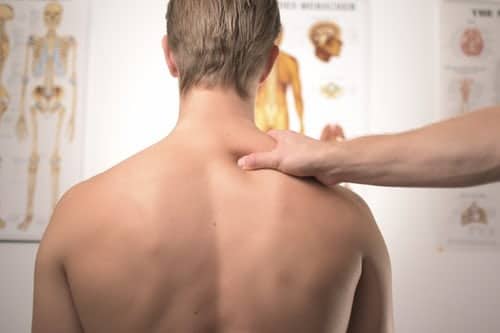Spinal stenosis is a condition characterized by undue pressure on the spinal cord or nerve roots due to an abnormal narrowing of the neural foramen or the spinal canal. While it might not have the name recognition of some other common disorders, it is, in fact, a very common condition. Evidence suggests that up to eight percent of the global population is afflicted by spinal stenosis, with most cases affecting people over the age of fifty.
The symptoms of spinal stenosis are consistent, and include the following:
- Discomfort while standing
- Pain in the arm, hand, or shoulder
- Pain on both sides of the body
- Numbness in the lower back
- Weakness in the lower back
- Pain and weakness in the thighs or buttocks
Pain from standing is the most common of the symptoms, occurring in almost ninety-five percent of cases. Shoulder and upper arm pain is also quite common, and is felt by approximately three quarters of those suffering from the disorder. Spinal stenosis is also known to cause a number of neurological disorders.
They include:
- Cervical myelopathy, which causes numbness in the hands, bowel control issues, and sometimes even paralysis
- A pinched nerve, with associated numbness
- Radiculopathy, which causes weakness and a loss of reflex
- Cauda equina syndrome, which causes pain, numbness, and weakness in the buttocks and the legs
- Intermittent neurogenic claudication, which causes pain and weakness in the buttocks and legs, especially when standing or walking
Why is Spinal Stenosis so Common?
This disease likely owes its frequency to its high number of potential causes. There are many risk factors that have the potential to result in spinal stenosis. Aging, something common to all humanity, is the most notable cause of the disorder. As a person gets older, their body (and their back) undergoes a series of changes that make spinal stenosis more likely. These are some of the effects of aging that are known to cause this disorder:
- The development of bone spurs
- The bulging or herniation of intervertebral discs
- The thickening of spinal ligaments
- The break down or hypertrophy of facet joints
- Osteoporosis and subsequent compression fractures of the spine
- Facet joint cysts which compress the nerves of the spinal sac
- Degenerative disk disease
Beyond aging, there are other factors that can lead to the development of spinal stenosis. Both osteoarthritis and, more rarely, rheumatoid arthritis, are known to cause the disorder. Spinal stenosis is sometimes congenital, meaning that a person is born with a spinal canal that is too narrow or with structural issues that later cause a narrowing. A slipped vertebrae is another potential cause, as is acute trauma like that which one can suffer in an auto accident.
The growth of tumors or excess tissue around the spine can narrow the spinal canal and bring about the onset of the condition. With so many potential causes, it is little wonder that spinal stenosis affects such a large percentage of the global population. As it is so common, doctors are often quick to suspect spinal stenosis when they encounter the normal symptoms. To confirm the presence of the disorder in a patient, a doctor will look first to the patient’s medical history, and then perform a physical examination.
An MRI is then used to confirm the occurrence of the disorder and to determine the extent of the damage done. There are a number of non-surgical treatments that patients can undergo to treat spinal stenosis. Anti-inflammatory drugs work to combat swelling and relieve pain, while exercise and physical therapy can relieve pain and lessen the severity of the symptoms. When these measures don’t work, surgery is often performed.
The operation used to treat spinal stenosis is called a lumbar decompressive laminactomy, and it is successful about eighty percent of the time. While spinal stenosis is extremely prevalent in the human population, occurring in an estimated eight percent of people, it is not as often diagnosed in the United States. Only 3.9 percent of visits to the doctor for mechanical back problems in the country are reported as relating to spinal stenosis.
Still, there is no denying the prevalence of the disorder. If you suffer from spinal stenosis, you are far from alone. Contact us today at 205-637-1363 for help with treatment.








